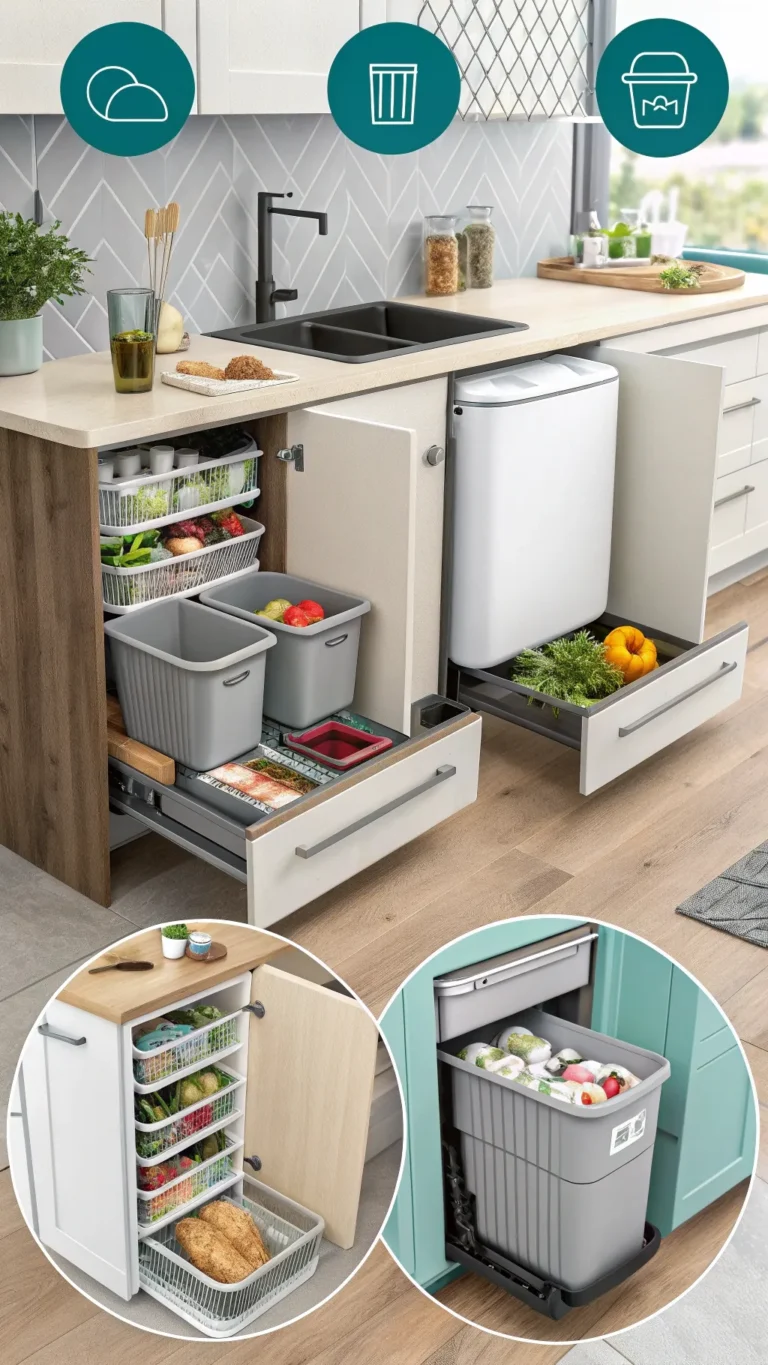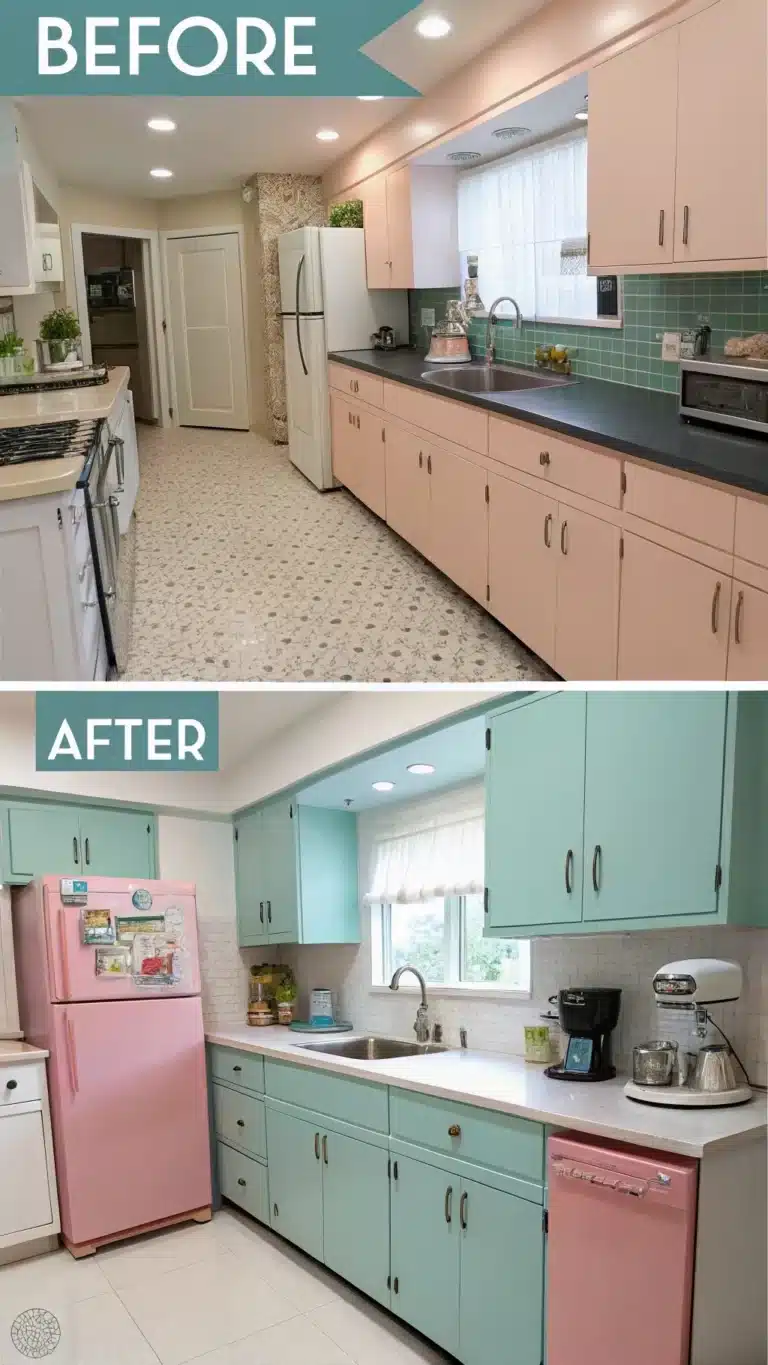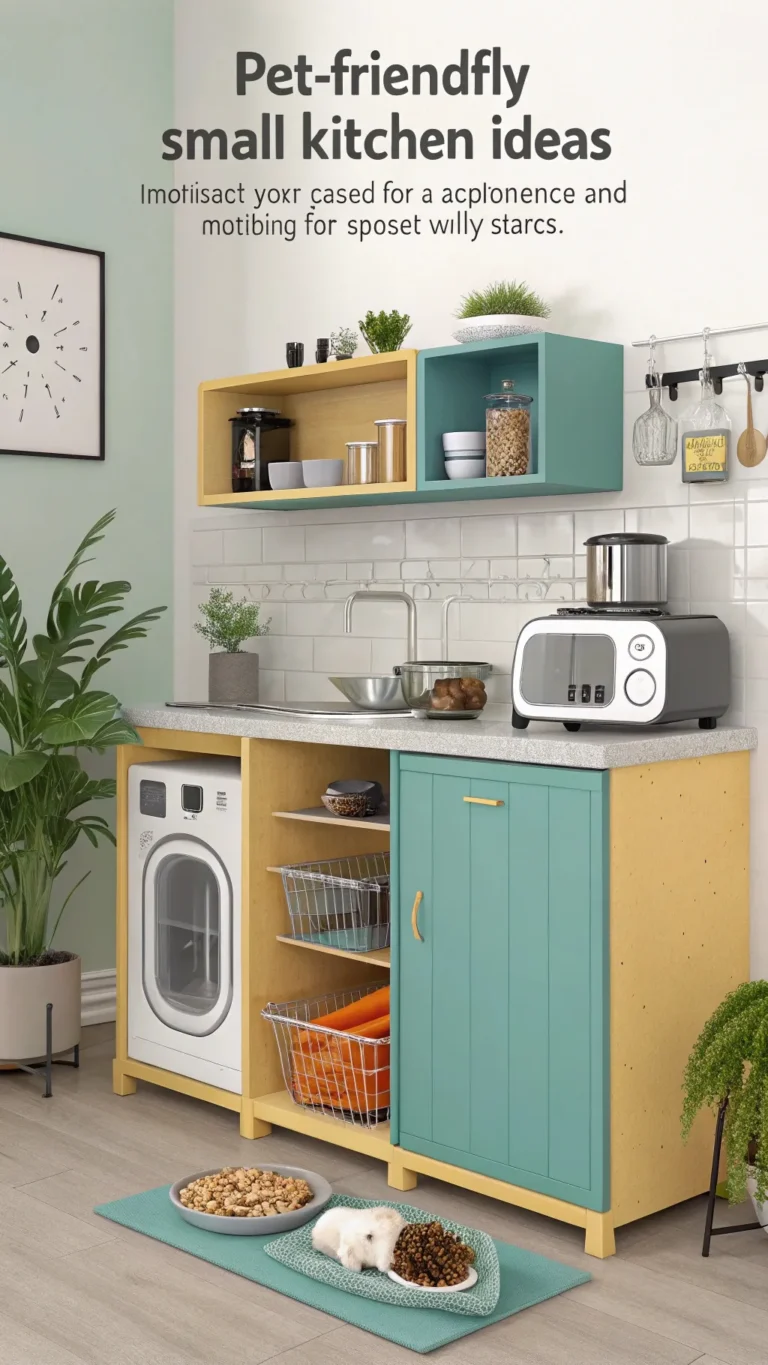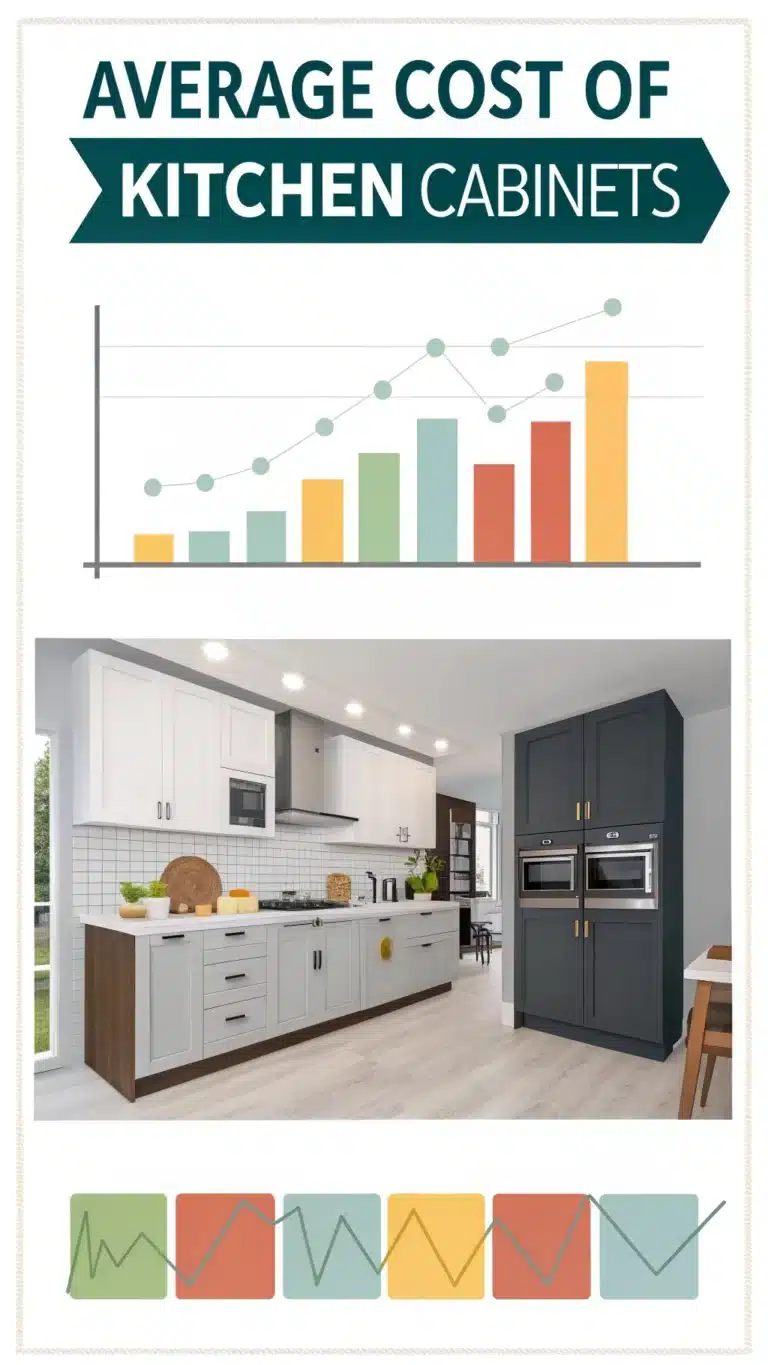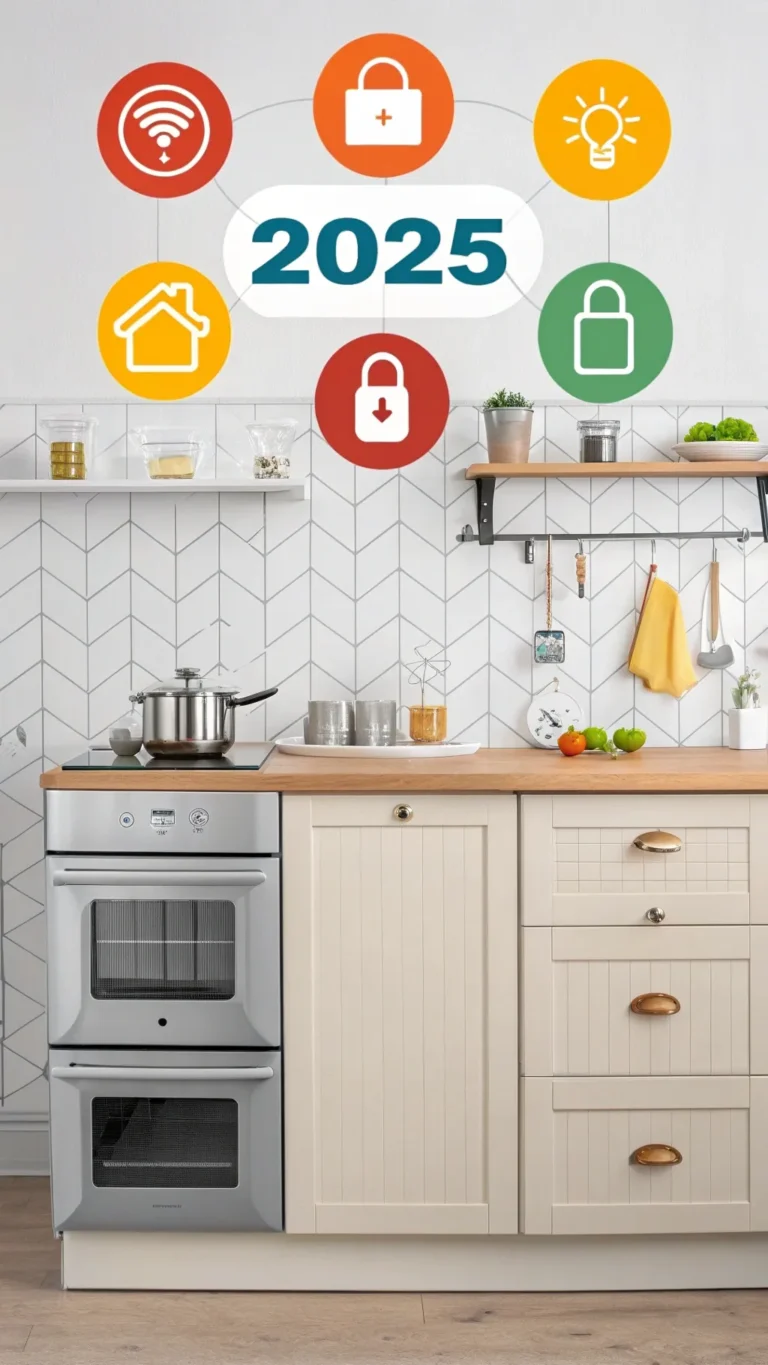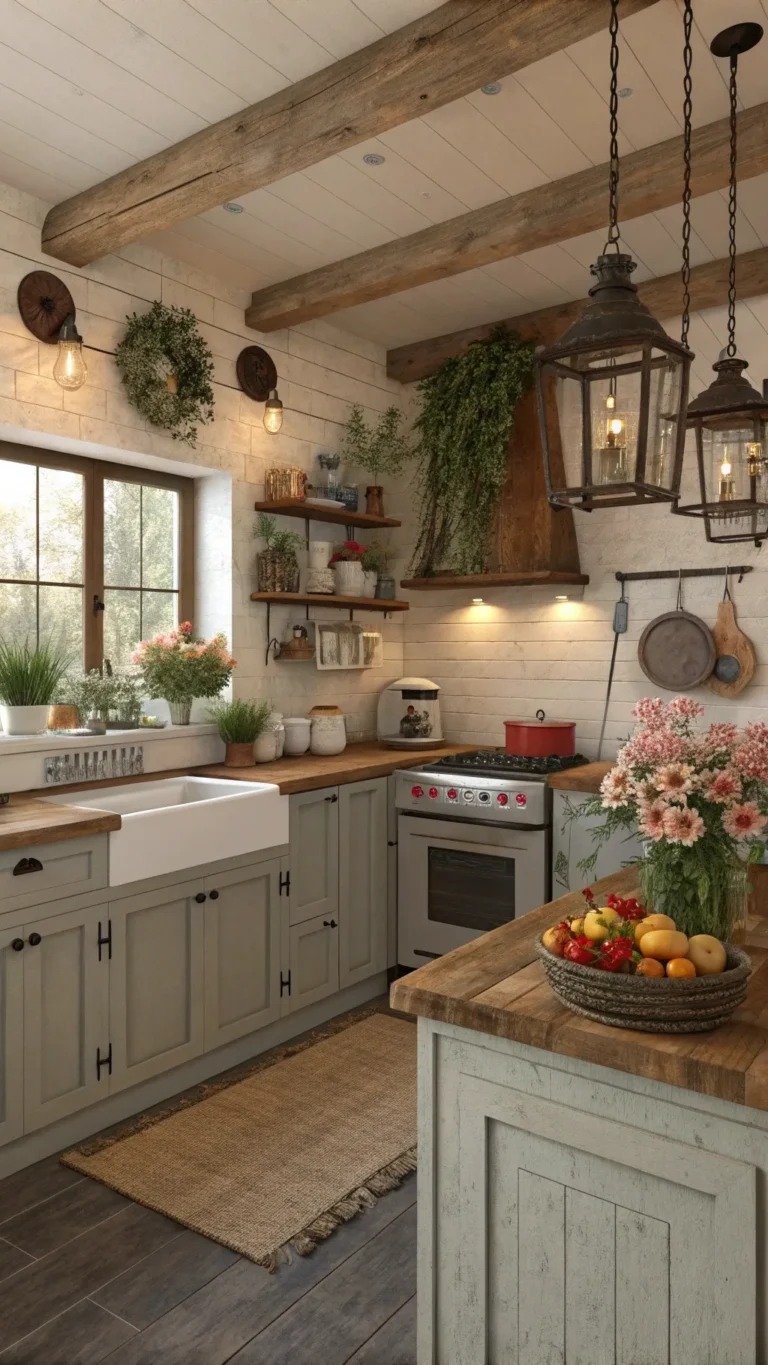Introduction
Small kitchens often battle bad smells, smoke, and sticky grease. Cooking can fill the room with heat and moisture fast. This can feel uncomfortable and damage your home over time. Larger exhaust hoods usually do the job, but they take up space. Many small kitchens or rental apartments lack room or permission for big vent systems.
This article shares small kitchen ventilation ideas that fit tight spaces. Options range from space-saving hoods to smart tech and simple tricks. These ideas help improve kitchen air quality, reduce odors, and control humidity. Each solution suits different budgets and styles.
Many homeowners and renters face ventilation challenges today. As one expert said, “Ventilation is key to a healthy, enjoyable cooking space.” Whether you cook lightly or often fry, this guide has practical choices.
Let’s explore ways to keep your small kitchen fresh in 2025.
Understanding Small Kitchen Ventilation: Why It Matters & The Basics
Why Proper Ventilation is Crucial in Small Kitchens
Cooking releases smoke, grease, carbon monoxide, and moisture. These affect health and damage homes. Proper ventilation removes these harmful elements quickly. It also stops lingering odors and cools the space.
Small kitchens have less air volume. Contaminants spread faster here than in larger rooms. Without good airflow, moisture can cause mold or mildew. Grease can build up on walls and cabinets, making cleaning tougher.
Comfort matters too. Good ventilation controls heat and smells, so cooking stays pleasant. According to a 2023 study by the Healthy Homes Institute, kitchens with better ventilation reported 35% fewer respiratory issues among residents.
Key Ventilation Concepts Explained
CFM (Cubic Feet per Minute)
CFM measures air volume moved by ventilation per minute. It indicates how powerful a hood is.
For small kitchens, aim for at least 100-150 CFM for electric stoves. Gas stoves often need 200-300 CFM or more because they produce more heat and fumes.
A simple rule: Multiply the stove width (in inches) by 100 to estimate needed CFM.
Ducted vs. Ductless Systems
Ducted hoods vent air outside the house. They remove heat, moisture, smoke, and odors effectively. But they need a vent path, making installation harder in some small or rental kitchens.
Ductless hoods filter and recirculate air inside. Charcoal filters trap odors and grease, but moisture stays. Filters must be cleaned or replaced often.
Ducted systems provide better air quality. Ductless ones offer flexibility where ducts aren’t available.
| Feature | Ducted Hood | Ductless Hood |
|---|---|---|
| Air Removal | Outside | Recirculated |
| Removes Moisture | Yes | No |
| Filter Required | Grease filters | Grease + charcoal filters |
| Maintenance | Cleaning grease filters | Cleaning + filter replacement |
| Installation | Requires ducting | Easier, no duct needed |
| Noise Level | Depends on blower | Usually quieter |
(Detailed source: ASHRAE Ventilation Standards, 2024)
Noise Levels (Sones)
Small kitchens are often open to living areas. Loud fans disturb the entire space. Look for hoods with noise rating under 5 sones. Modern fans run quieter, some as low as 1.5 sones.
Planning for Ventilation in a Small Kitchen
First, check stove location: against a wall or island? Next, see if you can add ductwork. Assess ceiling height and cabinet space.
Think about cooking style. Light cooks may need less power than heavy fryers. Set a budget upfront. Ventilation quality varies from affordable fans to premium vent hoods.
Experts advise investing in ventilation that matches your cooking to avoid odors and moisture problems later.
Idea 1-4: Space-Saving Hood Types for Small Kitchens
Idea 1: Under-Cabinet Range Hoods – Classic Space Savers
Under-cabinet range hoods mount beneath kitchen cabinets, just above the stovetop. They don’t need extra vertical space. These can blend into kitchen décor and leave counter space free.
Look for slim designs with powerful fans. Choose hoods matching your stove size to capture smoke fully. Popular filter choices include mesh or baffle types, easy to clean. Lighting under the hood helps too.
Pros: Space-efficient, good air removal, easy installation.
Cons: Limited vertical size might reduce fan power.
Idea 2: Insert/Liner Hoods – The Integrated Look
Insert or liner hoods fit inside custom cabinets above the stove. This setup hides the ventilation system for a seamless design.
It suits kitchens with upper cabinetry since it requires room above the cooktop. Offers a clean, built-in appearance.
Pros: Stylish, quiet operation, hides vent parts.
Cons: More costly and needs custom cabinet space.
Idea 3: Slim Profile & Low-Profile Hoods – Minimalism Matters
Slim or low-profile hoods have a thin, edge-hugging shape. They make kitchens feel open by taking up less visual space.
Perfect for tight kitchens with modern minimal style. Common styles include flat or shallow units.
Balance compactness with fan power. Check CFM ratings carefully.
Pros: Sleek design, saves visual space.
Cons: May have lower max airflow.
Idea 4: Microwave Range Hoods – Two-in-One Convenience
Microwave hoods combine a microwave oven and vent hood above the range. This saves counter space and adds cooking capability.
Keep in mind, their ventilation is often less powerful than dedicated hoods. Installation height matters for safety and effectiveness.
Pros: Space-saving, multi-functional.
Cons: Slightly less effective venting, higher installation.
Idea 5-7: Alternative & Less Common Solutions
Idea 5: Ductless Range Hoods – Ventilation for Renters & Tough Spots
Ductless hoods filter air through charcoal and grease filters. Air then returns to the kitchen.
Ideal when ductwork can’t be installed, such as apartments.
Filters need regular changing. These systems remove odors well but don’t remove moisture or heat.
Pros: Easy to install, good for rentals.
Cons: Less moisture removal, higher maintenance.
Idea 6: Downdraft Ventilation – Island & Peninsula Power
Downdraft vents sit behind or beside cooktops, pulling air downward.
Great for island kitchens without walls for hood mounts.
They need cabinet space below and may be ducted or ductless.
Capture is less effective for rising smoke, especially from front burners.
Pros: Good for island layouts, sleek design.
Cons: Less efficient, complex installation.
Idea 7: Integrated Cooktops with Ventilation – The Minimalist Dream
Some cooktops have built-in vent systems in the center or rear.
These hide the hood completely and open up wall space.
Usually high-end, require planning for ducting and installation.
Performance is improving but still often less powerful than large hoods.
Pros: Seamless look, no overhead hood needed.
Cons: Expensive, installation complexity.
Idea 8-10: Beyond the Appliance – Style, Smart Tech & Air Quality Boosters
Idea 8: Making it a Design Feature – Stylish Hoods for Small Spaces
Choose hoods that add charm. Stainless steel, glass canopies, or colored finishes stand out.
A well-designed hood becomes a kitchen focal point, adding personality without cluttering space.
Match style with function: a beautiful hood still needs good CFM and quiet operation.
Idea 9: Smart Ventilation for 2025 – Tech That Helps
Smart hoods sense smoke and steam, adjusting fan speed automatically.
Control fans, lights, and timers via smartphone apps or voice assistants.
Receive filter change reminders to keep performance high.
While costlier, these save effort and improve air quality.
Idea 10: Supplemental & Non-Appliance Ventilation Methods – Budget & Simple Solutions
Open windows and use fans for cross-ventilation during and after cooking.
Use nearby bathroom fans if strong enough; open doors to help airflow.
A portable air purifier reduces odors and particles but not grease.
Cook with lids, choose back burners, or limit frying to lower smoke.
Clean hoods and kitchen surfaces often to prevent grease buildup.
Small steps help a lot, especially where hoods aren’t possible.
Frequently Asked Questions (FAQs)
What is the recommended CFM for a small kitchen?
Aim for 100-150 CFM for electric stoves. Gas ranges may need 200-300 CFM. Cooking style affects needs.
Can I install a ductless range hood myself?
Basic mounting and plugging in are often DIY-friendly. Ducted systems need professional work. Follow instructions carefully.
How often should I clean or replace kitchen hood filters?
Clean metal filters monthly. Replace charcoal filters every 3-6 months, more if you cook frequently.
How can I improve ventilation in my apartment kitchen without installing a hood?
Use window and bathroom fans. Open windows for cross-breeze. Use portable air purifiers. Cook with lids, clean surfaces.
Is a ductless hood effective in a small kitchen?
Yes, it helps remove odors and grease. It works best where ducting is impossible. Regular filter care is key.
Finding Your Perfect Small Kitchen Ventilation Solution
Effective ventilation in a small kitchen keeps your home safe, fresh, and comfortable. This guide covered many options. From classic under-cabinet hoods to ductless systems, downdraft vents, and smart tech, there is a fit for every kitchen size, budget, and style.
Think about your space, cooking habits, and installation limits. Make a choice that works for you. As one kitchen designer said, “Good ventilation is invisible but makes all the difference.”
Ready to upgrade? Check out our detailed review of best range hoods for small kitchens. Found a smart idea that helped your kitchen? Share your tips in the comments below!
Small kitchen ventilation ideas improve air quality and life in tight spaces. Take a step today to breathe easier tomorrow.

